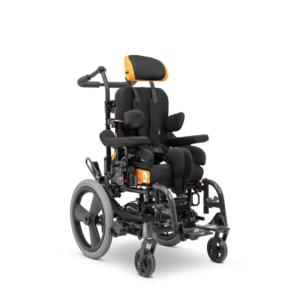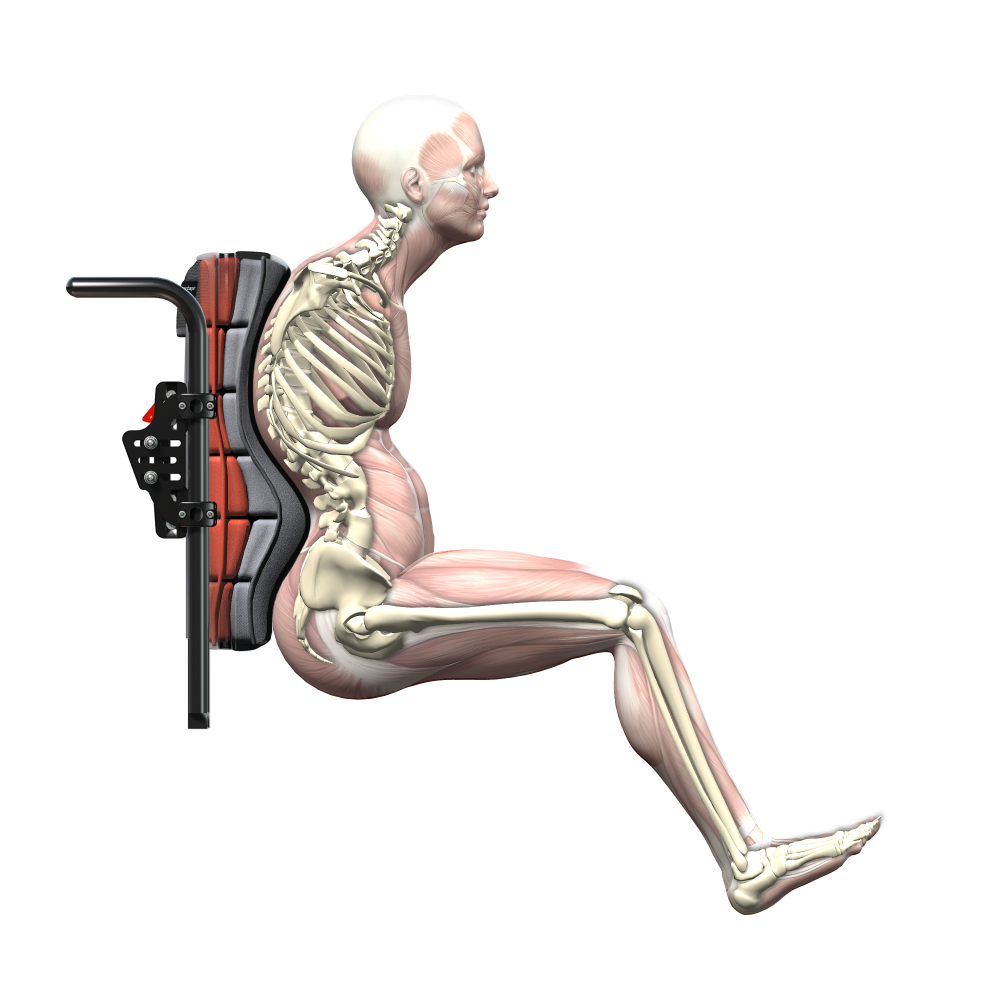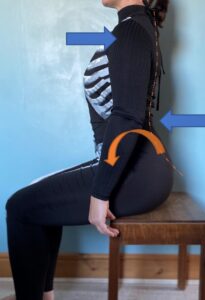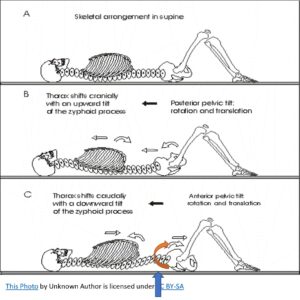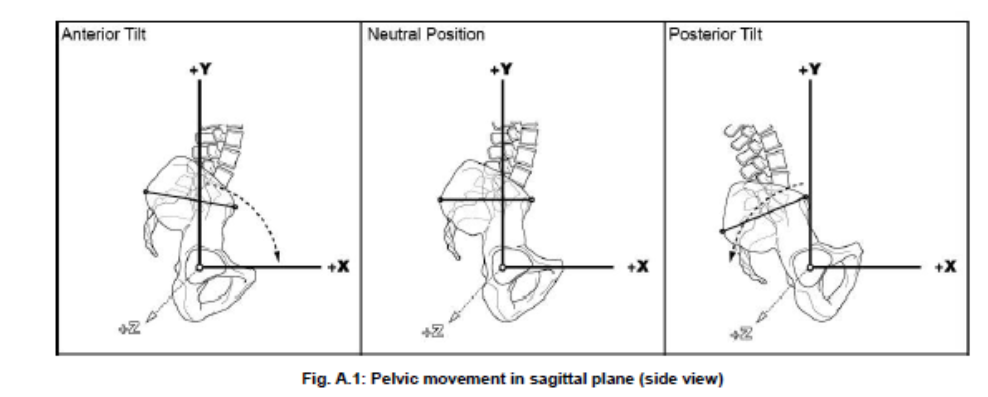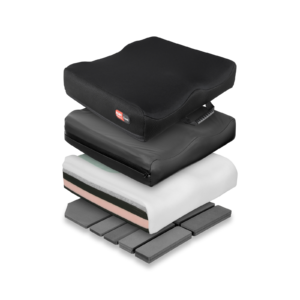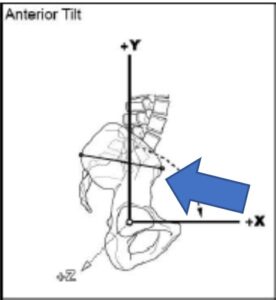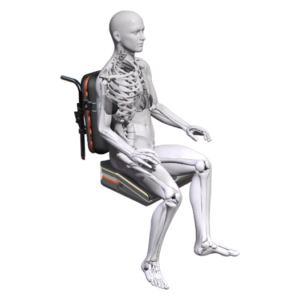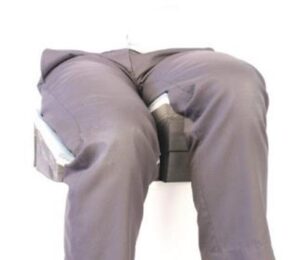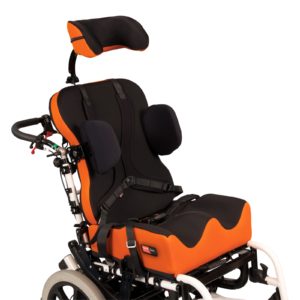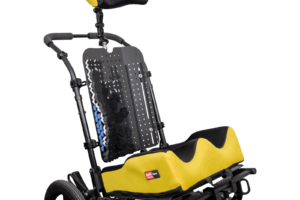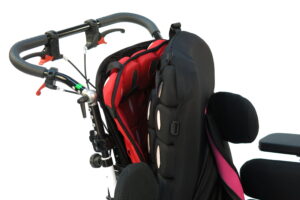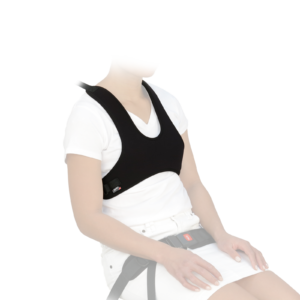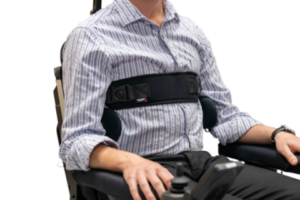A key focus will be in helping to orientate the pelvis so that the spine and head are stacked vertically above the pelvis and to allow the wheelchair user’s back to be in contact with the back support to optimise comfort, stability and reduced sitting effort.
This may require various approaches, which may be used simultaneously:
1. Angling the seat so that the knees are higher than the hips (accommodating hip flexion) so that the pelvis can move into a neutral tilt with the back against the back rest. This can be accomplished with the Spex cushion (up to around 95° hip flexion), the Spex Flex cushion (up to 110° hip flexion), or by using a foam wedge under the cushion to add contouring to better align the pelvis. Please note this will increase the pressure loading on the ischial tuberosities and sacrum which warrants careful analysis and evaluation.
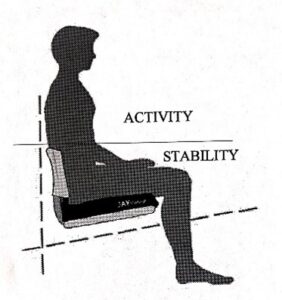
Figure 6: Example of backward angled (ramped) seat where knees are higher than the hips (Engstrom, 2011)
Figure 7: The Spex Flex cushion can respond to bilateral and unilateral (shown above) hip flexion limitations that influence pelvic tilt, rotation and obliquity.
You may find that there are tight hip flexors on one side of the pelvis (unilateral). The Spex Flex cushion is designed to accomodate and respond to hip flexion asymmetry between 70°-110° allowing simple adjustment, where possible.
2. Ensuring that the back rest is sufficiently supportive and if necessary, contourable, to provide additional support behind the pelvis and the user’s back without pushing the trink forward. This will improve stability and comfort. The height of the trunk depends on the functional and stability needs of the wheelchair user. Full back supports, like the Spex or Spex Supershape back supports allow for varying contouring that facilitates immersion and reinforced support for comfort.
Figure 8: Spex (left), TSS (middle) and Spex Supershape (right) offer contouring through their configuration for immersion.
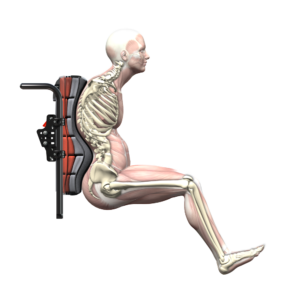
Figure 9: Spex Supershape contouring to illustrate ability to respond to increased lumbar lordosis whilst maintaining contact with the wheelchair user’s full back.
3. Utilising wheelchair tilt, to bring the trunk vertical againist gravity (if starting position is with trunk forward of pelvis). This needs to be carefully considered if the client presents with neck movement limitations preventing them from being able look around easily when in a tilted position.
4. An anterior trunk support (e.g. a chest strap or harness) may help provide support to the front of the chest, reducing the trunk falling forward over the thighs, whilst allowing free movement of the hands. This, however, requires careful consideration for individuals with breathing difficulties where compression on the chest from the force of the forward leaning may reduce respiratory efficiency. An anterior chest support should also avoid the percutaneous endoscopic gastronomy (PEG) tube side, if applicable. Chest straps need to be understood as a postural support device rather than a restraint (Babinec, 2015) and acceptable for the wheelchair user and caregivers, without causing discomfort.
Figure 10: Example of anterior chest supports.
5. A tray on the wheelchair can provide additional support to the forearms to allow weight-bearing and stability if the trunk is forward of the pelvis.
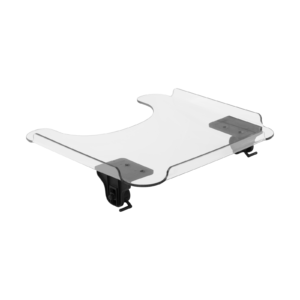
Figure 11: Spex Tray table with slide and lock hardware
6. Adjustable arm supports can optimise the angle and level beneath the forearms for stability. In combination with tray table they assist to improve upper body stability essential to accomplishing tasks.
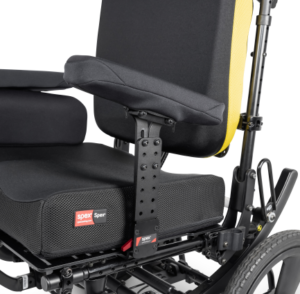
Figure 12: Spex angle-adjustable arm support

